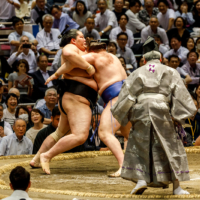Once upon a time in Japan, the top choice for hydrating electrolyte drinks came down to just two: Pocari Sweat or Aquarius.
Both Pocari Sweat and Aquarius, also known by their shortened names Pocari and Aquari, can trace their origins back to the 1980s. More than 40 years later, they maintain their dominance in the Japanese sports drink market, now joined by smaller players like Green Dakara and Loves Sports.
Pocari contains a balance of electrolytes intended to replicate the concentration found in the body and it is a common way for people to hydrate when sick or hungover. Aquarius, which is fortified with branched-chain amino acids (BCAAs) and citric acid, is sold as an exercise enhancement drink.
When it comes to the classic debate of Pocari versus Aquari, fans on both sides have strong opinions about which sports drink reigns supreme.
Sho Nakano, an influencer who posts about diet and nutrition, thinks neither is better than the other, noting that they each have their own strengths.
“Pocari Sweat has more sugar, salt and calories than Aquarius, and it’s ideal when you’re feeling low on energy, like if you have a cold or a hangover. Aquarius contains ingredients that Pocari doesn’t have like three essential amino acids and citric acid, and it’s effective for mid- and post-workout fatigue recovery,” he said in a video he shared to X that got 1.6 million views.
Sports drinks have become a staple in vending machines and on the shelves of almost every supermarket, drug store and convenience store in the country. Consumers in Japan guzzle more than ¥350 billion in sports drinks every year, according to the Japan Soft Drink Association.
The equation is simple: the hotter the weather, the more sports drinks people consume.
Research commissioned by the Japan Meteorological Agency in 2015 found that sports drink sales in Tokyo jump when the day’s average temperature hits 25 degrees Celsius. This year, as climate change fuels more extreme heat waves, Tokyo had already reached that number by mid-June.
For elite athletes, drinks of choice run the gamut from the ordinary to the unconventional.
Many choose to stay hydrated with good, old-fashioned water —Cristiano Ronaldo prefers his own brand, Ursu — while chocolate milk is a favorite among some athletes.
Then there are less traditional options like beetroot juice, coconut water, cactus water and green tea, which are relatively new to the sports scene but have their share of devotees.
San Diego Padres pitcher Yu Darvish revealed that he drinks grapefruit juice to replenish lost glycogen after a workout.
A few years ago, he shared a recipe on social media for a refreshing hydrating drink: 1 part water, 1 part pure grapefruit juice and a pinch of salt, telling fans that drinking at shorter intervals is an effective way to prevent heatstroke.
Others, most notably endurance athletes such as long-distance runners and road cyclists, are known to use carbonated and caffeinated beverages for performance enhancement during races or training.
American Frank Shorter swore by de-fizzed Coke, drinking it on his way to winning the 1972 Olympic marathon.
Two-time Ironman world champion Chris McCormack went so far as to call it “the best sports drink in the world” in one of his interviews.
Plenty of athletes are using Coke as a sports drink and reporting that it works, but Mikiko Matsuoka, a sports dietician who works for food service provider Aim Services, says there’s no scientific evidence proving that soda provides a competitive edge.
While Matsuoka concedes that there’s no such thing as the perfect sports drink, she says drinking too much water can dilute sodium in the body and lead to hyponatremia, a medical condition characterized by low sodium levels in the blood. Traditional sports drinks, she says, can be beneficial for athletes when used properly.
“The best choice depends on exercise duration and intensity, as well as weather conditions and sweat rate,” Matsuoka said. “The most effective rehydration solutions are said to contain a salt concentration between 0.1% to 0.2% and a sugar content that ranges from 3% to 8%, which is what commercial sports drinks have.”
A 500-milliliter bottle of Pocari Sweat contains about 30 grams of sugar, roughly equivalent to seven teaspoons.
The World Health Organization recommends a daily limit of about 25 grams of added sugar for adults of normal weight.
The Japan Sport Association recommends the use of sports drinks for individuals when they are exercising in intense heat and humidity or for longer than 60 minutes, but many health professionals also caution against overuse.
Matsuoka sees no harm in drinking electrolyte-enhanced beverages to help replenish water and energy lost during exercise, especially during prolonged physical activity. She does, however, warn that they contain a lot of sugar, which isn’t necessary or recommended for people who are less active.
“Sports drinks aren’t for everyday hydration and average exercisers,” she said.
“Consuming too much sugar can lead to serious health problems. Caution is advised.”






















With your current subscription plan you can comment on stories. However, before writing your first comment, please create a display name in the Profile section of your subscriber account page.